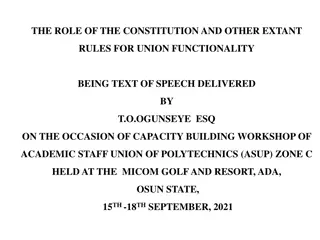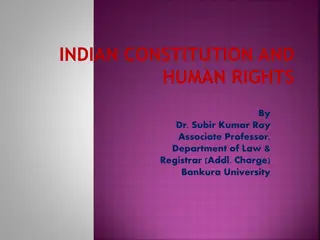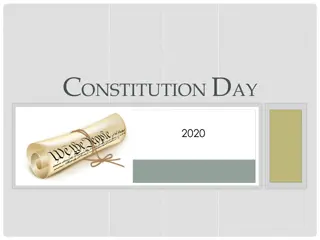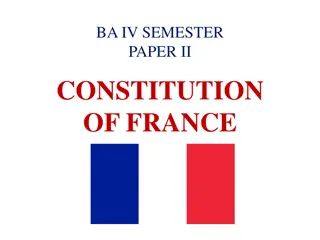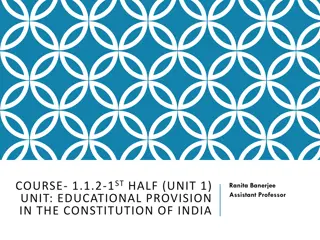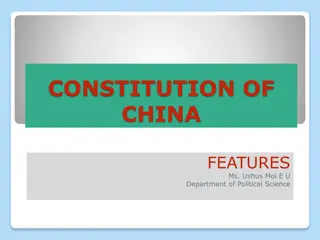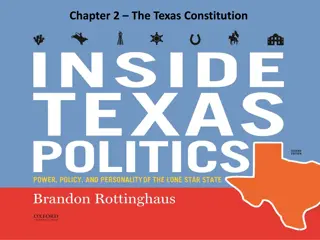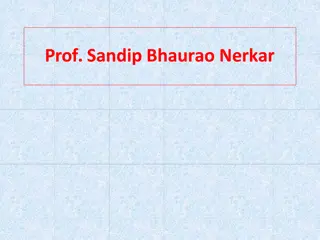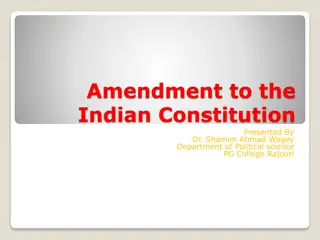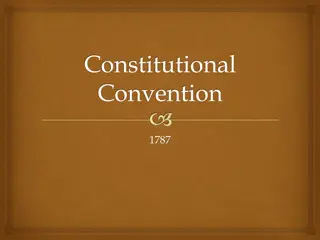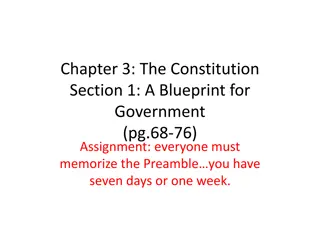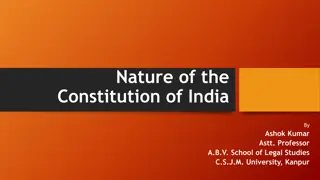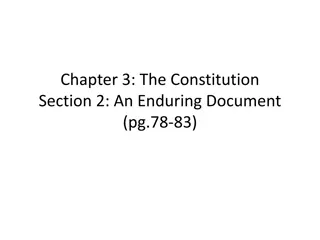Key Features of the Constitution of India
The Constitution of India is the longest written constitution in the world, combining various constitutional features from different countries. It emphasizes popular sovereignty, parliamentary form of government, and special provisions for regional diversity. The document reflects a commitment to detail and clarity, with a focus on democratic principles and accountability.
Download Presentation

Please find below an Image/Link to download the presentation.
The content on the website is provided AS IS for your information and personal use only. It may not be sold, licensed, or shared on other websites without obtaining consent from the author. Download presentation by click this link. If you encounter any issues during the download, it is possible that the publisher has removed the file from their server.
E N D
Presentation Transcript
Longest Written Constitution in the World The Constitution of India is a very comprehensive document. With historical advantage to learn from the constitutional experience of many countries, the founding fathers of the Indian Constitution combined many features from different constitutions in the world. First, the Constitution of India is the longest written constitution in the world. This is due to many reasons: i. To be clear and categorical so that confusion could be avoided, the founding fathers wanted to make the constitution very detailed.
Longest Written Constitution (Contd.) ii. It is also due to the fact that the Indian Constitution is partly a pre-independence constitutional legacy. Both the 1919 Act ( Government of India Act) and the 1935 Act were very lengthy. iii. Another reason for it being so lengthy is the inclusion of special provisions to deal with asymmetric dimensions of the Indian federation. There are provisions to meet the regional problems and demands in certain states, such as Nagaland, Assam, Manipur, Sikkim and Mizoram.
Popular Sovereignty The second important feature of the Constitution of India is that it proclaims the sovereignty of the people of the country. Thus, the declaration to constitute a sovereign democratic republic. i. Popular sovereignty expresses itself in the chapter dealing with elections in Article 326 which declares that the elections to the House of People and to the Legislative Assembly of every state shall be on the basis of adult suffrage . ii. Further, those who wield the executive power of the government are responsible to the legislature and through them to the people.
Parliamentary form of Government Third, the Constitution of India sets up a Parliamentary form of government both at the centre and in the states. The main features of this form of government are as follow: i. The executive is responsible to the legislature. It is both individual responsibility as well collective responsibility of the council of ministers as a whole or team. ii. The head of the state is nominal whereas the actual or effective authority is exercised by the Prime Minister who heads the council of ministers. The Prime Minister is the head of the government.
Parliamentary form(Contd.) iii. The executive under this system does not have a fixed tenure as it depends on the support of the legislature. It has to leave office if a no- confidence motion is passed against it by the legislature. iv. In this form of government there is a very close relationship between the legislature and the executive. All the members of the executive have also to be members of the legislature.





